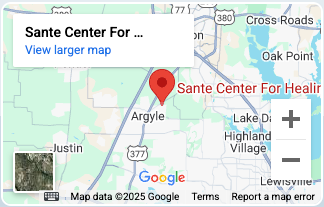How common is alcoholism? Alcohol addiction?
28.9 million people ages 12 and older (10.2% in this age group) had Alcohol Use Disorder (AUD) in the past year.² The Alcohol-Related Disease Impact application estimates that each year there are more than 178,000 deaths (approximately 120,000 male deaths and 59,000 female deaths) attributable to excessive alcohol use, making alcohol one of the leading preventable causes of death in the United States, behind tobacco, poor diet and physical inactivity, and illegal drugs.²
What is alcoholism, Alcohol dependence, Alcohol addiction?
Alcoholism is known by medical terminology as Alcohol Use Disorder (AUD). AUD is a neurological disorder which can vary in severity from mild to severe based on symptoms experienced. This condition can lead to lasting changes in the brain which can increase the risk of relapse. AUD is a medical condition characterized by a diminished ability to decrease or stop alcohol consumption in spite of negative impacts on social life, work responsibilities, important relationships, legal matters and health.
What Increases the Risk for Alcohol Use Disorder (AUD)?
There are several factors that amplify the chances that someone will acquire an alcohol use disorder (AUD) such as:
- Pre-existing mental health conditions such as depression, bipolar disorder or post-traumatic stress disorder
- Past childhood abuse
- Family history of alcohol use disorder
- Family history of other substance use disorders
- Availability of alcohol
- Heavy alcohol use
- Binge drinking
What Are the Symptoms of Alcohol Use Disorder?
Alcohol use disorder can be mild, moderate or severe, based on the number of symptoms you experience.¹ Signs and symptoms may include:¹
- Being unable to limit the amount of alcohol you drink
- Wanting to cut down on how much you drink or making unsuccessful attempts to do so
- Spending a lot of time drinking, getting alcohol or recovering from alcohol use
- Feeling a strong craving or urge to drink alcohol
- Failing to fulfill major obligations at work, school or home due to repeated alcohol use
- Continuing to drink alcohol even though you know it’s causing physical, social, work or relationship problems
- Giving up or reducing social and work activities and hobbies to use alcohol
- Using alcohol in situations where it’s not safe, such as when driving or swimming
- Developing a tolerance to alcohol so you need more to feel its effect or you have a reduced effect from the same amount
- Experiencing withdrawal symptoms — such as nausea, sweating and shaking — when you don’t drink, or drinking to avoid these symptoms
What Are the Types of Treatment for Alcohol Use Disorder?
Alcohol Use Disorder can be treated with a variety of methods and with different levels of acuity within a continuum of care.
A formal assessment may help you discern next steps. In addition to gaging your use and associated consequences, an effective evaluation helps identify any other co-occurring physical or mental health conditions. Getting simultaneous treatment for other co-occurring conditions makes the treatment process more effective.
For example, anxiety disorder, can serve as a basic cause and trigger for alcohol abuse. Medication and learning anxiety-reducing techniques can lower the chances of a relapse.
There isn’t a fixed approach to treatment; it should be personalized to you. Your experiences, underlying reason for drinking, and triggers will differ from those of other people. Someone who drinks because of stress won’t benefit from a plan aimed at someone who drinks because of depression. Someone who self-medicates the symptoms of bipolar disorder with alcohol needs a different plan altogether than someone who has underlying trauma. In Santé Center for Healing’s near 30 years, they have treated thousands of individuals who have multiple addictions, co-occurring mental health disorders and underlying unresolved trauma, too.
“Alcohol use is the most common type of substance use disorder in the United States. As individuals look at ways to limit or stop drinking alcohol, they may find they are unable to decrease their intake, which could serve as an indication to seek professional help. We have treated alcohol dependence and other substance use disorders for 29 years, and if we aren’t the right fit for an individual, we will help them find a place that is,” stated Santé CEO Sam Slaton, MEd, LPC-S, MBA, MHSM.
You need an individualized plan for getting sober- potentially a combination of assessment, detox, residential level of care, medication assisted treatment, intensive outpatient treatment, individual therapy, group therapy, family therapy and life-long peer support. You don’t have to have all the answers now. Trust Santé to help guide you through the process. This might be your first time with treatment; it isn’t ours!
Can People With Alcohol Use Disorder Recover?
Many individuals with Alcohol Use Disorder (AUD) experience recovery and most often when they approach their AUD as a chronic disease. Recovery isn’t about what you give up but all that you can gain. Since 1996, Santé has been fearlessly furthering a world where lives are defined by recovery, not by addiction. Why? Left untreated, addiction is a fatal disease. 1 in 3 families are directly impacted by substance use disorder, and often for generations. Santé’s mission is to provide the resources for long-term recovery through an integrated clinical and medical continuum of care individualized to each unique person and family we have the pleasure to serve.
Sources
- Cleveland Clinic. Alcohol Use Disorder. Retrieved from https://my.clevelandclinic.org/health/diseases/3909-alcoholism on 6/11/24.
- National Institute on Alcohol Abuse and Alcoholism. Retrieved from https://www.niaaa.nih.gov/alcohols-effects-health/alcohol-topics-z/alcohol-facts-and-statistics/alcohol-use-united-states-age-groups-and-demographic-characteristics.
Image by pavelkant.
Follow us on social media for more:







